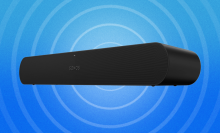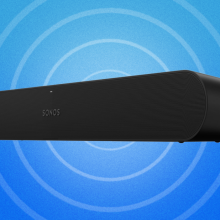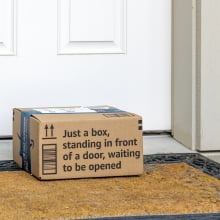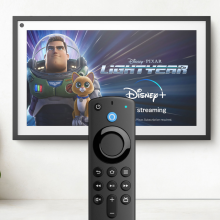The Pixel 8 and Pixel 8 Pro phones are out, and we do the same song and dance every year. A new version of a flagship phone comes out, and of course, it’s almost always better than the last one. Sometimes by a lot, sometimes by a little. In the case of the Pixel 8 and Pixel 8 Pro, it’s only by a little.
That’s not to denigrate these devices, mind you. Both of these phones are excellent Android handsets — among the best you can buy. Google bumped up the refresh rate on the base Pixel 8, and on both phones, the search engine giant added a swanky new chipset, upgraded cameras, and gave us some weird new AI toys to play with. You objectively get more here than you did with Pixel 7, and that’s a good thing.
However, there’s no doubt that this is an incremental set of upgrades that don’t require an upgrade if you’re already holding onto one of last year’s models. These are high-quality flagships from a company that has already conquered the mid-range smartphone market, which means that annual refreshes are bound to lack excitement and vigor.
What I love about Pixel 8 and Pixel 8 Pro
Google didn’t fix what wasn’t broken

It may sound like I’m criticizing Google for not doing more to rock the boat with Pixel 8 and Pixel 8 Pro, but there’s a good side to that approach, too. Last year’s phones were pretty incredible and there wasn’t much that needed changing.
Both phones still sport the same subtle futuristic look with a horizontal, metallic camera bar on both models. Yes, that still means they don’t lie flush with any flat surface when you set them down, but you get used to that quickly enough. Color options this year are solid, too. Hazel, Rose, and Obsidian for Pixel 8, and Bay, Obsidian, and Porcelain for Pixel 8 Pro.
There is one new change that’s kind of a bummer at the point of sale, which is that the base Pixel 8 starts at $699 rather than last year’s starting price of $599. Pixel 8 Pro, meanwhile, has the same starting price of $999.
Beyond that, I dig the new corner design, which is more rounded on both phones, and the matte finish on the backside of the Pixel 8 Pro looks fantastic. I wish the regular Pixel 8 had it, but instead it’s stuck with a more glassy, reflective texture.
Broadly speaking, these phones look and feel a lot like the Pixel 7. I can’t get mad about that — even if it’s not especially thrilling as a selling point.
A big display boost for Pixel 8
One big disparity between the Pixel 7 and Pixel 7 Pro came in the form of a much higher refresh rate on the latter model. Pixel 7 topped out at 90Hz (which is perfectly fine) while Pixel 7 Pro went up to 120Hz. Thankfully, Google alleviated that problem this year.
In what feels like a gift from the heavens, the base Pixel 8 now has an adaptive refresh rate that can go between 60Hz and 120Hz. Pixel 8 Pro has a wider range of 1Hz to 120Hz, which may save some battery life, but isn’t likely to make a noticeable difference to most people’s eyes. It stinks that there’s still a difference between the two at all, but they both max out at the same figure, which is great.
One point of contention from me, though: You have to dig into the settings menu and turn on the 120Hz refresh rate on the base Pixel 8. It’s on by default on Pixel 8 Pro. I get wanting to save users some battery life, but I feel that the phone should make its best impression on the user right when you first boot it up.
Excellent performance all around

Both new phones come with a new Tensor G3 processor that continues to build upon Google's in-house chip ambitions. The most substantial effects of having new chips in these phones come in the form of AI-based enhancements, which we’ll get to in a bit, but just know that performance is top notch all around here.
Whether you’re idly going down a deep Wikipedia rabbit hole (I learned a lot about mad cow disease this week), scrolling through your social feeds, or streaming videos, neither of these phones ever buckle. There is the caveat that I wasn’t able to more accurately gauge their performance using the GeekBench benchmarking tool (the Pixel 8 isn’t compatible with it yet). Without doing so, it’s hard to tell just how much better it is than Pixel 7 (if at all), or if there’s a substantial difference between Pixel 8 and Pixel 8 Pro. There probably is in some specific contexts, as the base model has 8GB RAM and the Pro model has 12GB, but in everyday use, I didn’t notice a disparity.
All I know is that I had no complaints in several days of using both phones. Can’t ask for more than that.
What I dislike about Pixel 8 and Pixel 8 Pro
AI features nearly cross the line into bad vibes

My only legitimate gripe about the Pixel 8 concerns its use of machine learning, which has been a cornerstone of Google’s software development for Pixel for years. However, my problem has little to do with whether these features work and more to do with the unsettling nature of AI that we can’t seem to escape from in the tech world these days.
For instance, let’s talk about the “summarize” feature. If you go to a web page like a news article, you can bring up Google Assistant and hit a little button that will use AI to make a quick bullet-point summary of the most important nuggets of information. It works beautifully, churning out results in just a few seconds.
On the flip side, I kind of hate this. Maybe it’s because I’m a writer who'd prefer that people to actually read my words instead sifting through AI-created "Cliffnotes," but I don’t feel that we need to encourage people to read even less than they already do. News articles are already meant to be quick and digestible as is.
I feel similarly about call screening and the “best take” photo editing feature, though I wasn’t able to test either because they require specific circumstances. Call screening basically turns Google Assistant into your own personal secretary, giving you button prompts for generic responses to phone calls from delivery people and other callers.
The idea is that you don’t need to actually talk to another human being to have a quick conversation with them. Not only is this fundamentally anti-social, but you can accomplish the same basic feats with old-fashioned methods like voicemail and text messages. I can see the utility if you’re simply too busy, but I feel that this is Google reinventing solutions to problems we already rectified years ago.
As for “best take,” it’s a feature that only works if you have taken several photos of the same group of people over a short burst of time. The point is that you can swap facial expressions out between people so you never have to deal with those pesky situations where one person in the friend group looks a little worse than everyone else.
I don’t want to sound like a crank, but to me, this is tailor-made for a world where everything has to look as perfect as possible on social media. I get it, but isn’t there charm in imperfection? Isn’t a group photo made more memorable by one person making a funny expression? It just feels a little less human to have manufactured, AI-perfected group photos.
Also, you can just take photos until everyone gets it right. It takes like 30 seconds at most to do that. Humans have been doing it for decades.
What’s ‘eh’ about Pixel 8 and Pixel Pro
Pixel 8 Pro temperature sensor is just kind of there

Perhaps the oddest new addition to the Pixel 8 Pro is an object temperature sensor on the rear camera bar. It’s a real little guy you can just barely make out, but the gist of it is that you can open the Thermometer app on the phone, hold it within 1.9 inches of an object, and measure its surface temperature.
This…works, I guess? It may have applications in things like cooking food, but chances are anyone who cooks regularly already has another method of doing that. It’s also very simple to gauge the temperature of an object by touching it with your hands. I don’t really get anything out of learning that my coffee table is 66.8 degrees Fahrenheit.
One thing worth noting is that Google is in talks with the FDA to allow the sensor to measure skin temperature, which would obviously be much more useful. Hopefully both entities can work together to make that happen, otherwise this feature is basically a bust.
Pixel 8 and Pixel 8 Pro cameras
It shouldn’t surprise anyone that both of these phones have great cameras. That’s been Google’s M.O. for years now, and it holds true this year, as it always does.
There’s slightly less of a gap specs-wise this year between the two models than before. Both sport a 50MP main rear lens and identical 10.5MP selfie lenses, but the similarities pretty much stop there. Pixel 8 has a 12MP ultra-wide lens, which pales in comparison to the 48MP ultra-wide lens (and additional 48MP telephoto lens) on Pixel 8 Pro.
That said, both phones take great-looking shots. Last year, I was particularly taken with the Pixel 7 Pro’s incredibly sharp 30x zoom capabilities, and that hasn’t changed this year.


One new trick the base Pixel 8 can do is macro focus on tiny objects, a feature first introduced in the Pixel 7 Pro a year ago. Just put the phone right up against something like a budding flower, and the lens automatically switches to the macro mode for high-detail shots of little stuff.

I’d be remiss not to mention another new thing both phones can do, which is Magic Editor. This is basically the old Magic Eraser tool (which lets you tap or circle elements of a photo to get them the heck outta there) gone Super Saiyan. You can move objects, resize them, and even change how the sky looks in a photo with just a few taps of your finger.
This is one AI trick I’m OK with because the results often don’t even really look realistic. They can look pretty goofy, which I love.


Aside from that, everything you may have loved about previous Pixel cameras is here, too. Colors pop, everything is crystal clear, and Night Sight is able to turn my backyard (the most un-photographable place on Earth at night) into something you can actually see under moonlight.



Pixel 8 and Pixel 8 Pro battery life
There isn’t a lot to say about battery life on Pixel 8 and Pixel 8 Pro other than “it’s pretty good!”
To be more specific, Google rates both of these phones at “beyond 24 hours” on a single charge, noting that the average battery life in testing was 31 hours. Unfortunately, I wasn’t able to run a more detailed benchmark thanks to the same compatibility problems that plagued performance testing. Anecdotally, though, I was able to get about a full day of heavy use (I look at Twitter a lot, OK?) out of both devices.
Final thoughts
Pixel 7 and Pixel 7 Pro felt like the best of all worlds a year ago. They had stunning new camera features to go along with superb performance. Pixel 8 and Pixel 8 Pro are technically better devices, but they’re a good deal less exciting.
I don’t expect everyone to have the same philosophical objections to the new AI features that I do, but I have them nonetheless. The Pro’s temperature sensor is also value-neutral at best right now. Google just didn’t pack as many new and enthralling features into these phones as it did last year. That’s fine. It happens with devices that are refreshed annually, but that doesn’t mean it isn’t worth pointing out.
Even with that in mind, these are going to be the best Android phones you can get if you care about great cameras, strong performance, and AI. Just…maybe don’t jump to upgrade if you already have a Pixel 7.

























